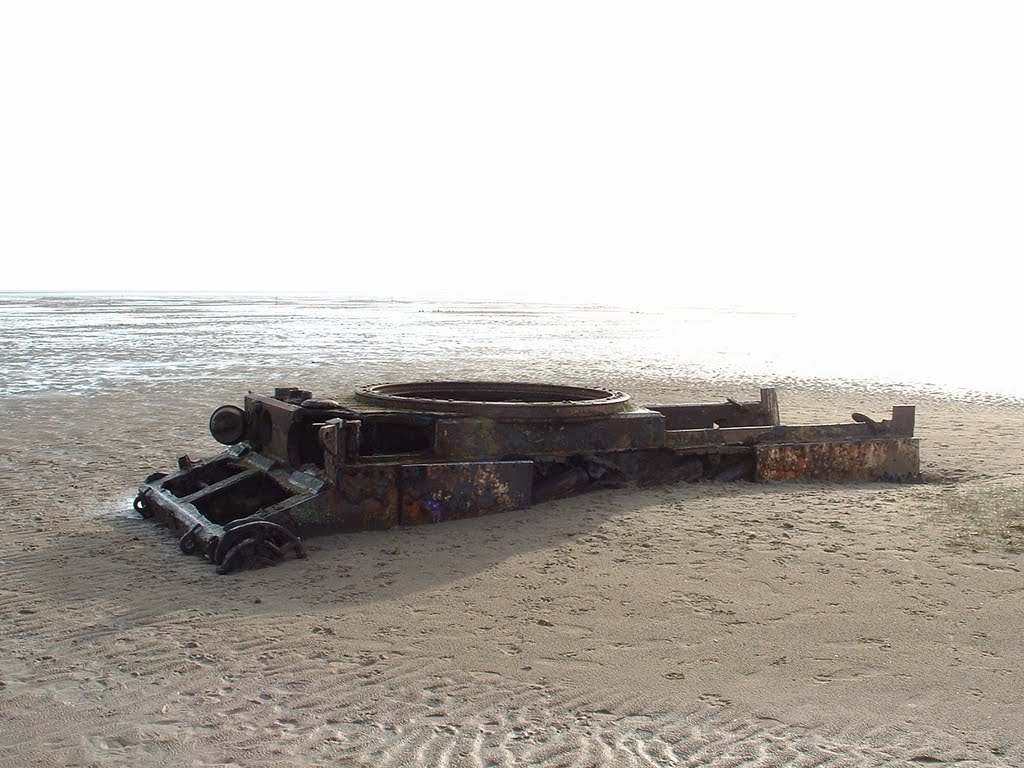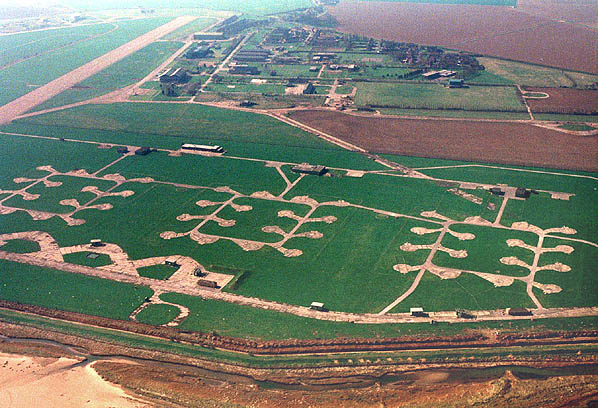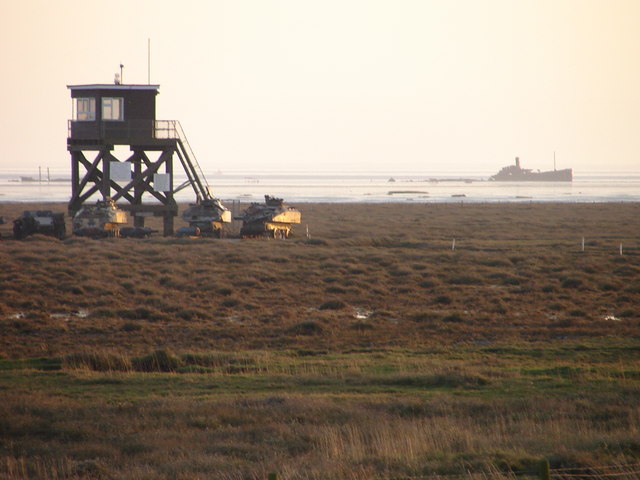Post War Landscape
Topic 6: Post War Landscape
As the war progressed, the threat of invasion receded and as the allies pressed the German forces in Europe so did the threat of aerial attack.
The war in Europe ended in May 1945, although many of the impacts of the war were to continue until the early 1950s.
Immediately after the war, growing tensions between the western and Soviet powers resulted in the continuation of civil defence and air defence measures in Lincolnshire, including air defence exercises along the Lincolnshire coast. Sections of the Lincolnshire coast had been used as bombing ranges during the war, and this continued, with wrecks and old equipment being placed on beaches for targets.
Hull of World War 2 tank used for target practice near Donna Nook. (Photo: David Sunderland)
The end of the second world war had seen the introduction of two weapons that would fundamentally change military strategy for the remainder of the 20th century and the beginning of the 21st century. The first of these was the long range rocket developed by Germany, and the other was the atomic bomb developed by a combined force of American and British scientists.
The long range rocket presented the military with the prospect of a weapon being launched a long distance from the country and able to approach at such speed that anti-aircraft measures would prove ineffective. One response was to develop rockets and missiles of our own, which resulted in changes to the airfields as launch platforms were added.
Bloodhound missile platforms at RAF North Coates. (Photo: Subterranea Brittanica)
The atomic bomb was a more delicate situation. Although British Scientists had been involved in developing the atomic bombs used by the United States in World War 2, the United States government had taken care that the British did not learn enough to develop their own weapon. As a result the British embarked on their own development and testing programme, starting more or less from scratch. Initially, a number of sites in Britain, including the Lincolnshire coast, were considered for British nuclear bomb tests, but it was felt that public opinion would be unfavourable and testing was moved to Australia.
RAF Wainfleet bombing range, one of several along the Lincolnshire coast. (Photo: Ian Paterson)



